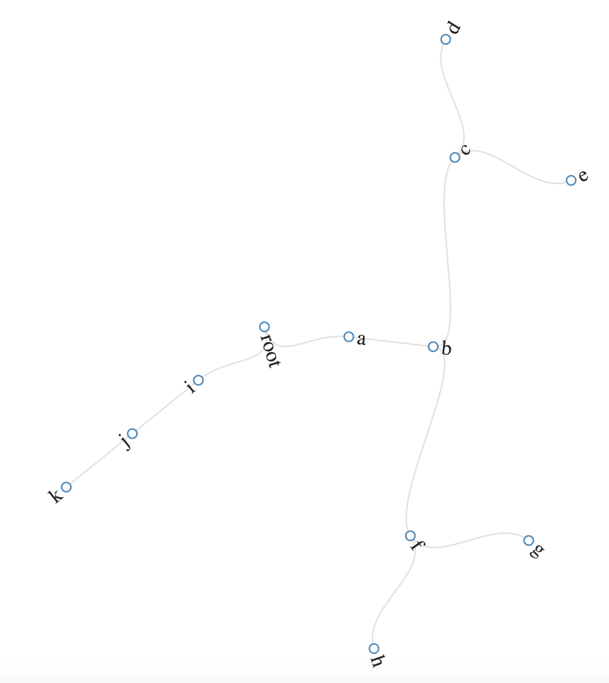I would like to visualize some deeply nested data using networkD3. I can't figure out how to get the data into the right format before sending to radialNetwork.
Here is some sample data:
level <- c(1, 2, 3, 4, 4, 3, 4, 4, 1, 2, 3)
value <- letters[1:11]
where level indicates the level of the nest, and value is the name of the node. By using these two vectors, I need to get the data into the following format:
my_list <- list(
name = "root",
children = list(
list(
name = value[1], ## a
children = list(list(
name = value[2], ## b
children = list(list(
name = value[3], ## c
children = list(
list(name = value[4]), ## d
list(name = value[5]) ## e
)
),
list(
name = value[6], ## f
children = list(
list(name = value[7]), ## g
list(name = value[8]) ## h
)
))
))
),
list(
name = value[9], ## i
children = list(list(
name = value[10], ## j
children = list(list(
name = value[11] ## k
))
))
)
)
)
Here is the deparsed object:
> dput(my_list)
# structure(list(name = "root",
# children = list(
# structure(list(
# name = "a",
# children = list(structure(
# list(name = "b",
# children = list(
# structure(list(
# name = "c", children = list(
# structure(list(name = "d"), .Names = "name"),
# structure(list(name = "e"), .Names = "name")
# )
# ), .Names = c("name",
# "children")), structure(list(
# name = "f", children = list(
# structure(list(name = "g"), .Names = "name"),
# structure(list(name = "h"), .Names = "name")
# )
# ), .Names = c("name",
# "children"))
# )), .Names = c("name", "children")
# ))
# ), .Names = c("name",
# "children")), structure(list(
# name = "i", children = list(structure(
# list(name = "j", children = list(structure(
# list(name = "k"), .Names = "name"
# ))), .Names = c("name",
# "children")
# ))
# ), .Names = c("name", "children"))
# )),
# .Names = c("name",
# "children"))
Then I can pass it to the final plotting function:
library(networkD3)
radialNetwork(List = my_list)
The output will look similar to this:
Question: How can I create the nested list?
Note: As pointed out by @zx8754, there is already a solution in this SO post, but that requires data.frame as input. Due to the inconsistency in my level, I don't see a simple way to transform it into a data.frame.


dput(my_list). In addition, the input data is notdata.frame, and making it intodata.frameis not easy IMO, because the levels are not consistent. That's why I taggedrecursionand thinking it might be the direction. However, correct me if I am wrong. – Enatedf1 <- data.frame(level, value, stringsAsFactors = FALSE); split(df1, cumsum(df1$level == 1))then remove the min values, and split on next min value, etc. – Bale